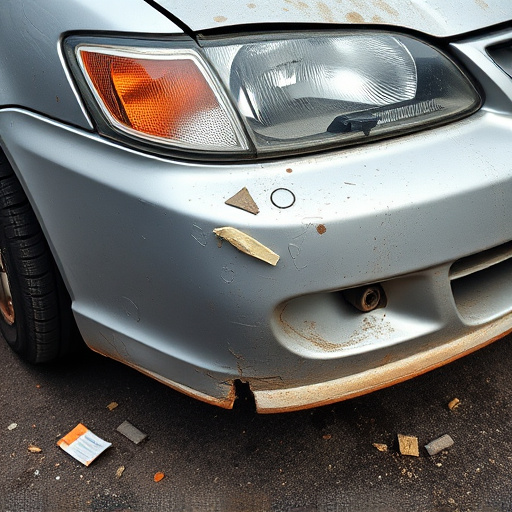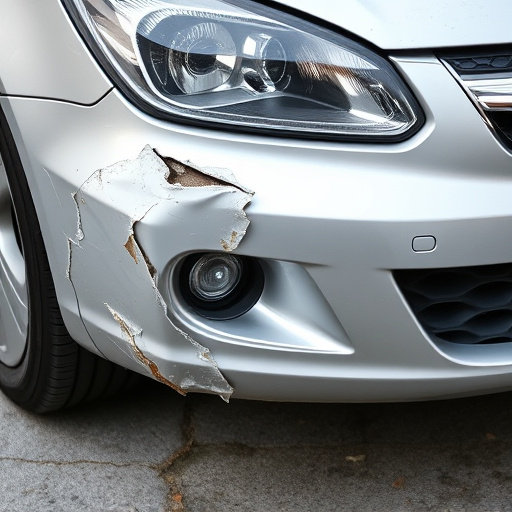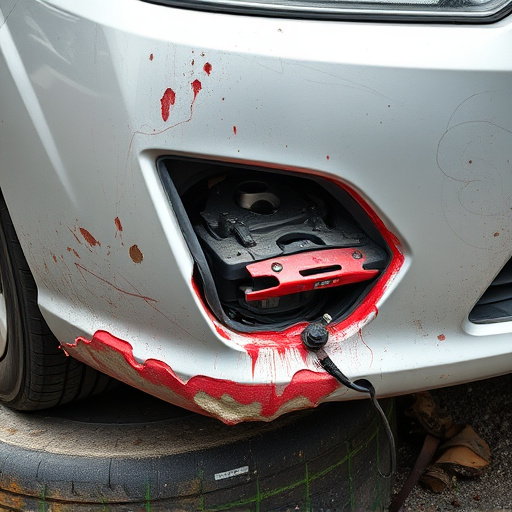Mercedes electronic stability repair is essential for modern vehicle safety, using sensors and software to maintain control. Specialized auto services use diagnostic tools to identify ESC problems, while regular maintenance prevents damage. Skilled technicians ensure proper restoration, vital for handling, braking, and accident prevention. Comprehensive testing and driver feedback verify repairs, adhering to safety standards and protecting all road users.
In today’s digital age, ensuring the reliability and safety of Mercedes’ sophisticated electronic stability systems is paramount. Mercedes electronic stability repair, a critical aspect of vehicle maintenance, demands rigorous verification. This article delves into the intricate world of Mercedes electronic stability controls, exploring their functionality and the potential repercussions of faulty repairs. We dissect the verification process, emphasizing the importance of test drive evaluation techniques to ensure optimal performance and passenger safety.
- Understanding Mercedes Electronic Stability Systems
- The Impact of Faulty Repair on Safety
- Verification Process: Test Drive Evaluation Techniques
Understanding Mercedes Electronic Stability Systems

Mercedes electronic stability systems are a critical component of modern vehicle safety. These sophisticated systems use sensors and software to monitor wheel speed, steering input, and other factors to help maintain control in challenging driving conditions. When issues arise with Mercedes electronic stability repair, it’s crucial to have a thorough understanding of how these systems operate. This knowledge ensures that any repairs are accurately diagnosed and executed, restoring the vehicle’s safety features to their full capacity.
Auto repair services specializing in Mercedes vehicles employ advanced diagnostic tools to identify problems within the electronic stability control (ESC) system. Proper auto maintenance includes regular checks and updates to ensure the ESC remains functional and effective. A car body restoration may be necessary if damage has occurred, emphasizing the need for experienced technicians who can handle both the mechanical and electronic aspects of these repairs, ensuring a seamless return to safe driving conditions.
The Impact of Faulty Repair on Safety

Faulty or inadequate Mercedes electronic stability repair can have severe implications for road safety, making it a critical aspect that cannot be overlooked. The electronic stability control (ESC) system is designed to prevent skidding and loss of control by individually braking wheels and reducing engine power when sensors detect wheel slip during cornering. When this vital system malfunctions, drivers may experience reduced handling and braking capabilities, significantly increasing the risk of accidents.
In a world where vehicles are becoming increasingly sophisticated with advanced electronics, ensuring proper repairs is more important than ever. Unverified or substandard Mercedes electronic stability repair can lead to unexpected vehicle behavior, especially in emergency situations, posing potential dangers not only to the driver but also to other road users and pedestrians. Therefore, it’s crucial that any issues are identified and rectified through comprehensive testing before a car is returned to the road, ensuring peace of mind for drivers and adhering to safety standards required in the automotive industry.
Verification Process: Test Drive Evaluation Techniques

The verification process for Mercedes electronic stability repair involves a meticulous test drive evaluation. After the initial repair or modification, skilled technicians take the vehicle on a series of controlled maneuvers to assess its stability and handling dynamics. This includes straight-line driving to check for any pull or drift, cornering at varying speeds to gauge tire grip and suspension response, and dynamic testing like emergency lane changes or sudden evasive maneuvers to simulate real-world scenarios. Advanced diagnostic tools are employed during these tests to monitor system performance, ensuring the electronic stability control (ESC) functions optimally and effectively without compromising safety.
Effective evaluation requires a combination of both quantitative data from sensors and qualitative feedback from experienced drivers. By merging technological precision with human intuition, technicians can pinpoint any anomalies or adjustments needed in the Mercedes electronic stability repair. This holistic approach ensures not just that the ESC system is functioning correctly, but also that it enhances the vehicle’s overall handling characteristics, delivering a seamless blend of performance and safety in every drive.
Mercedes electronic stability repair is a critical process that requires rigorous verification through test drive results. After understanding the sophisticated systems and their impact on safety, it’s evident that faulty repairs can have severe consequences. Implementing robust test drive evaluation techniques ensures that only competent repairs are approved, thereby safeguarding drivers and enhancing vehicle performance. Thus, prioritizing thorough verification is paramount for maintaining optimal Mercedes electronic stability systems.














